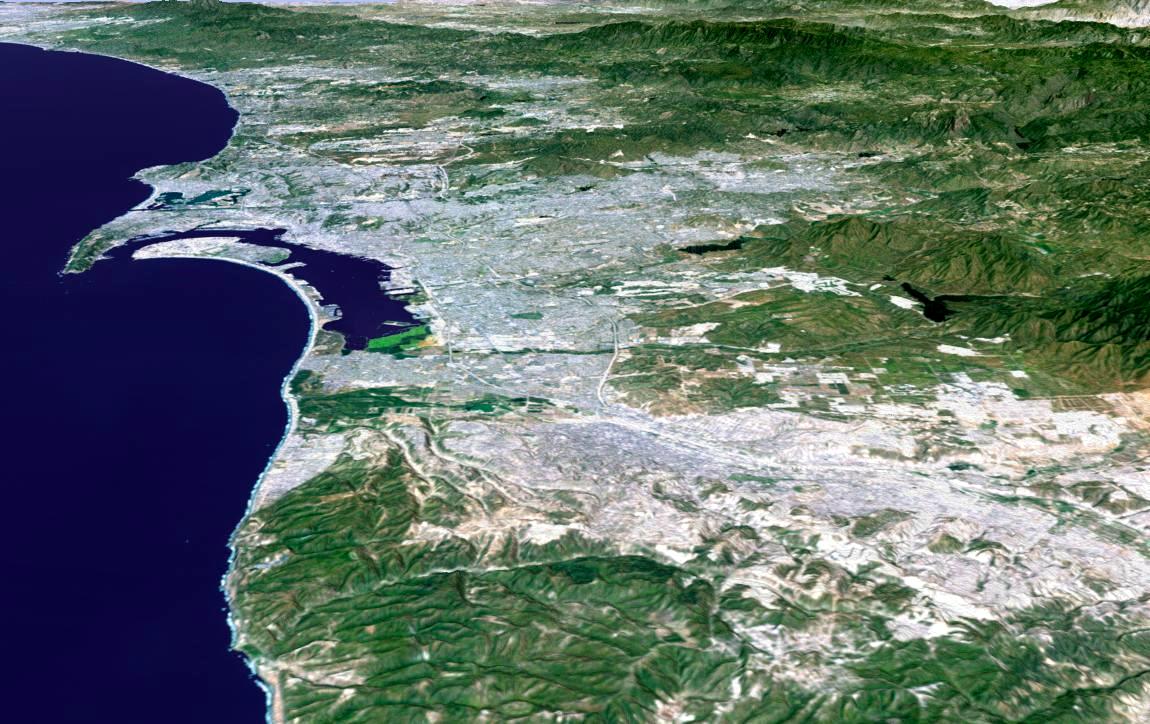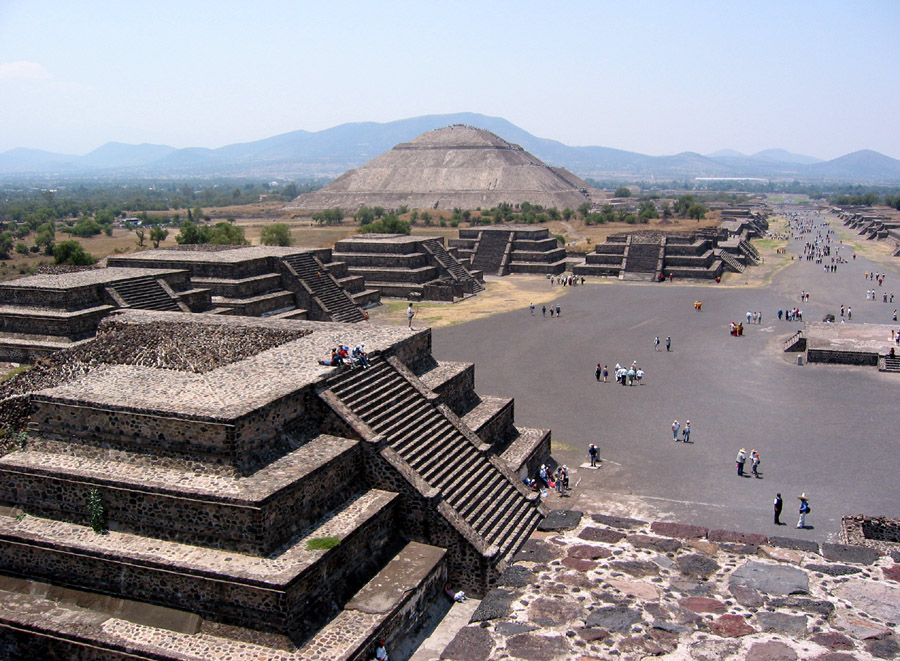|
La Jolla Complex
The archaeological La Jolla complex (Shell Midden People, Encinitas Tradition, Millingstone Horizon) represents a prehistoric culture oriented toward coastal resources that prevailed during the middle Holocene period between c. 8000 BC and AD 500 in southwestern California and northwestern Baja California. Description Characteristics of the La Jolla complex include handstones and basin or slab millingstones ( manos and metates), rough percussion-flaked stone edge tools, flexed burials, and extensive exploitation of shellfish, particularly venus clam (''Chione'' spp.), scallop (''Argopecten aequisulcatus''), mussel (''Mytilus californianus''), and oyster (''Ostrea lurida''). Cogged stones and discoidals are distinctive but unusual artifacts. Other uncommon artifacts include shell ornaments (primarily spire-removed ''Olivella'' spp. beads) and projectile points (Pinto, Gypsum, and Elko forms). Bones from sea mammals and fish occur in La Jollan middens, but they are not abundant. Fis ... [...More Info...] [...Related Items...] OR: [Wikipedia] [Google] [Baidu] |
Holocene
The Holocene ( ) is the current geological epoch. It began approximately 11,650 cal years Before Present (), after the Last Glacial Period, which concluded with the Holocene glacial retreat. The Holocene and the preceding Pleistocene together form the Quaternary period. The Holocene has been identified with the current warm period, known as MIS 1. It is considered by some to be an interglacial period within the Pleistocene Epoch, called the Flandrian interglacial.Oxford University Press – Why Geography Matters: More Than Ever (book) – "Holocene Humanity" section https://books.google.com/books?id=7P0_sWIcBNsC The Holocene corresponds with the rapid proliferation, growth and impacts of the human species worldwide, including all of its written history, technological revolutions, development of major civilizations, and overall significant transition towards urban living in the present. The human impact on modern-era Earth and its ecosystems may be considered of global si ... [...More Info...] [...Related Items...] OR: [Wikipedia] [Google] [Baidu] |
Cynthia Irwin-Williams
Cynthia Irwin-Williams (April 14, 1936 – June 15, 1990) was an archaeologist of the prehistoric American Southwest. She received a B.A. in Anthropology from Radcliffe College in 1957; the next year she received a M.A. in the same field. In 1963 she completed her educational career in Anthropology with a PhD. from Harvard University. Beginning her career in the 1950s, Irwin-Williams was considered a groundbreaker for women in archaeology, like her friend and supporter Hannah Marie Wormington.Cassells, E. Steve. (1997). ''The Archaeology of Colorado, Revised Edition.'' Boulder, Colorado: Johnson Books. pp. 298-299. . Archaeological career She worked with her brother, Henry Irwin, a fellow archaeologist, in Colorado from the mid-1950s to 1960. In 1966 Irwin-Williams and her brother published a book of her findings from the Magic Mountain site excavation performed for the Peabody Museum of Harvard University in 1959–1960. They also worked on the nearby and related LoDaisKa sit ... [...More Info...] [...Related Items...] OR: [Wikipedia] [Google] [Baidu] |
History Of San Diego County, California
San Diego County (), officially the County of San Diego, is a county in the southwestern corner of the U.S. state of California. As of the 2020 census, the population was 3,298,634, making it California's second-most populous county and the fifth-most populous in the United States. Its county seat is San Diego, the second-most populous city in California and the eighth-most populous city in the United States. It is the southwesternmost county in the 48 contiguous United States, and is a border county. It is also home to 18 Native American tribal reservations, the most of any county in the United States. San Diego County comprises the San Diego-Chula Vista-Carlsbad, CA Metropolitan Statistical Area, which is the 17th most populous metropolitan statistical area and the 18th most populous primary statistical area of the United States as of July 1, 2012. San Diego County is also part of the San Diego–Tijuana transborder metropolitan area, the largest metropolitan area shar ... [...More Info...] [...Related Items...] OR: [Wikipedia] [Google] [Baidu] |
History Of San Diego
The written (as opposed to oral) history of the San Diego, California, region began in the present state of California when Europeans first began inhabiting the San Diego Bay region. As the first area of California in which Europeans settled, San Diego has been described as "the birthplace of California." Explorer Juan Rodriguez Cabrillo claims to have discovered San Diego Bay in 1542, roughly 200 years before other Europeans settled the area; in truth, Native Americans such as the Kumeyaay people had been living in the area for as long as 12,000 years prior to any European presence. A fort and mission were established in 1769, which gradually expanded into a settlement under first Spanish and then Mexican rule. San Diego officially became part of the U.S. in 1848, and the town was named the county seat of San Diego County when California was granted statehood in 1850. It remained a very small town for several decades, but grew rapidly after 1880 due to development and the e ... [...More Info...] [...Related Items...] OR: [Wikipedia] [Google] [Baidu] |
Archaeological Sites In Baja California
Archaeology or archeology is the scientific study of human activity through the recovery and analysis of material culture. The archaeological record consists of artifacts, architecture, biofacts or ecofacts, sites, and cultural landscapes. Archaeology can be considered both a social science and a branch of the humanities. It is usually considered an independent academic discipline, but may also be classified as part of anthropology (in North America – the four-field approach), history or geography. Archaeologists study human prehistory and history, from the development of the first stone tools at Lomekwi in East Africa 3.3 million years ago up until recent decades. Archaeology is distinct from palaeontology, which is the study of fossil remains. Archaeology is particularly important for learning about prehistoric societies, for which, by definition, there are no written records. Prehistory includes over 99% of the human past, from the Paleolithic until the advent of ... [...More Info...] [...Related Items...] OR: [Wikipedia] [Google] [Baidu] |
Archaeological Sites In California
Archaeology or archeology is the scientific study of human activity through the recovery and analysis of material culture. The archaeological record consists of artifacts, architecture, biofacts or ecofacts, sites, and cultural landscapes. Archaeology can be considered both a social science and a branch of the humanities. It is usually considered an independent academic discipline, but may also be classified as part of anthropology (in North America – the four-field approach), history or geography. Archaeologists study human prehistory and history, from the development of the first stone tools at Lomekwi in East Africa 3.3 million years ago up until recent decades. Archaeology is distinct from palaeontology, which is the study of fossil remains. Archaeology is particularly important for learning about prehistoric societies, for which, by definition, there are no written records. Prehistory includes over 99% of the human past, from the Paleolithic until the advent of ... [...More Info...] [...Related Items...] OR: [Wikipedia] [Google] [Baidu] |
Archaeological Cultures Of North America
Archaeology or archeology is the scientific study of human activity through the recovery and analysis of material culture. The archaeological record consists of Artifact (archaeology), artifacts, architecture, biofact (archaeology), biofacts or ecofacts, archaeological site, sites, and cultural landscapes. Archaeology can be considered both a social science and a branch of the humanities. It is usually considered an independent academic discipline, but may also be classified as part of anthropology (in North America – the four-field approach), history or geography. Archaeologists study human prehistory and history, from the development of the first stone tools at Lomekwi in East Africa 3.3 million years ago up until recent decades. Archaeology is distinct from palaeontology, which is the study of fossil remains. Archaeology is particularly important for learning about prehistoric societies, for which, by definition, there are no written records. Prehistory includes ove ... [...More Info...] [...Related Items...] OR: [Wikipedia] [Google] [Baidu] |
Native American History Of California
Native may refer to: People * Jus soli, citizenship by right of birth * Indigenous peoples, peoples with a set of specific rights based on their historical ties to a particular territory ** Native Americans (other) In arts and entertainment * Native (band), a French R&B band * Native (comics), a character in the X-Men comics universe * ''Native'' (album), a 2013 album by OneRepublic * ''Native'' (2016 film), a British science fiction film * ''The Native'', a Nigerian music magazine In science * Native (computing), software or data formats supported by a certain system * Native language, the language(s) a person has learned from birth * Native metal, any metal that is found in its metallic form, either pure or as an alloy, in nature * Native species In biogeography, a native species is indigenous to a given region or ecosystem if its presence in that region is the result of only local natural evolution (though often popularised as "with no human intervention") d ... [...More Info...] [...Related Items...] OR: [Wikipedia] [Google] [Baidu] |
Pre-Columbian Cultures
This list of pre-Columbian cultures includes those civilizations and cultures of the Americas which flourished prior to the European colonization of the Americas. Cultural characteristics Many pre-Columbian civilizations established permanent or urban settlements, agriculture, and complex societal hierarchies. In North America, indigenous cultures in the Lower Mississippi Valley during the Middle Archaic period built complexes of multiple mounds, with several in Louisiana dated to 5600–5000 BP (3700 BC–3100 BC). Watson Brake is considered the oldest, multiple mound complex in the Americas, as it has been dated to 3500 BC. It and other Middle Archaic sites were built by pre-ceramic, hunter-gatherer societies. They preceded the better known Poverty Point culture and its elaborate complex by nearly 2,000 years. [...More Info...] [...Related Items...] OR: [Wikipedia] [Google] [Baidu] |
California
California is a U.S. state, state in the Western United States, located along the West Coast of the United States, Pacific Coast. With nearly 39.2million residents across a total area of approximately , it is the List of states and territories of the United States by population, most populous U.S. state and the List of U.S. states and territories by area, 3rd largest by area. It is also the most populated Administrative division, subnational entity in North America and the 34th most populous in the world. The Greater Los Angeles area and the San Francisco Bay Area are the nation's second and fifth most populous Statistical area (United States), urban regions respectively, with the former having more than 18.7million residents and the latter having over 9.6million. Sacramento, California, Sacramento is the state's capital, while Los Angeles is the List of largest California cities by population, most populous city in the state and the List of United States cities by population, ... [...More Info...] [...Related Items...] OR: [Wikipedia] [Google] [Baidu] |



.jpg)
